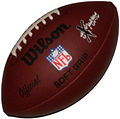Best of the Blogs: International Law Edition
 In one week, roughly two dozen students from Marquette University Law School and the University of Wisconsin Law School will return to America bringing with them many fond memories of Giessen, Germany, their jet-lagged bodies, and an inexplicable taste for beer mixed with coca-cola. In recognition of this fact, this week’s “Best of the Blogs” features an international law edition.
In one week, roughly two dozen students from Marquette University Law School and the University of Wisconsin Law School will return to America bringing with them many fond memories of Giessen, Germany, their jet-lagged bodies, and an inexplicable taste for beer mixed with coca-cola. In recognition of this fact, this week’s “Best of the Blogs” features an international law edition.
What is the status of a Declaration of Independence under international law, and must the nations of the world respect the self-proclaimed independence of a break-away state? That is the question that the International Court of Justice faced when it decided that Kosovo’s Declaration of Independence was legal. Professor Christian Tams of the University of Glasgow discusses the ICJ’s ruling in the Kosovo Opinion and finds the criticism that many scholars leveled at the world court to be unwarranted.


